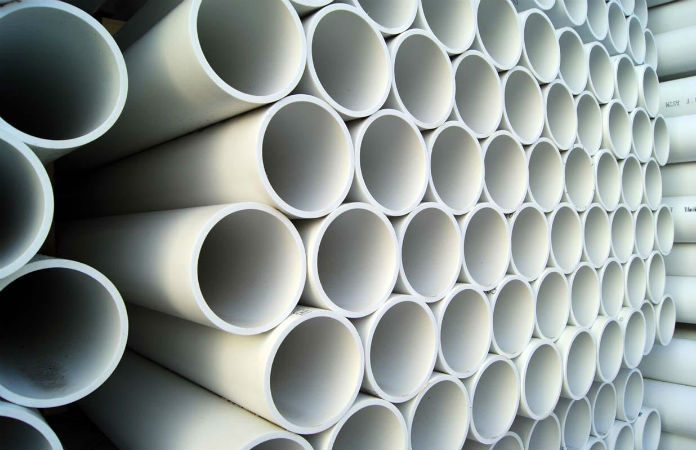Pipes come in many varieties and types of plastic and metal pipes. Different pipes are ideal for specific functions. The lifespan of these pipes also varies. The choice of which type is right for your intended purpose could be overwhelming. Of course, you’d want to use the pipe for as long as possible without having to go through a lot of problems with it, right? Perhaps, learning about different types of pipes and their lifespan will be essential to help you make the right decisions, right? Here are 6 different types for you. Please read on.
1. Steel Pipes
The steel industry has been around for so many decades now. Their products, in this case, steel pipes, have found trust among customers especially because of their durability and relevance for application in underground projects. Corrosion has always been a big enemy to metal pipes, especially in the coastal areas and their surroundings. But this is solved by the availability of stainless steel pipes. Galvanized steel pipes are ideal for use in transporting non-potable water or greywater.
Steel pipes are not only long lasting but are also known for their outstanding strength and excellent load bearing capabilities. This makes them ideal for use in sign poles, billboards, culverts, and bollards or barriers for enhancing bicycles and pedestrian safety. If you’re having any of these or related projects, you can consider buying used steel pipes for your project.
2. Copper Pipes
Perhaps you must have heard and even used this type of pipe since it’s the most traditional type used. The fact that they’ve been popular and are still popular means they have the potential to meet the needs of different clients. And, yes they have this potential. The pipes are well known for their extensive duration – at least 50 years – and reliability. The pipes have proven standard for reliability since the early 1960s. They have superior corrosion resistance and are ideal to be used for both cold and hot water – they’re heat tolerant. The management of this type of pipe is also less complicated, unlike some other types available.
The pipes are also convenient for ensuring the water conveyed through the pipes will remain unpolluted regardless of whether the water is cold or hot. Old pipes can easily be recycled to produce quality pipes again. What’s more, the pipes the fittings on these pipes stay tight, sturdy, and ensures the pipes are not prone to leaks. Common sizes of copper pipes are;
❖ M – have very thin walls hence are ideal for interior cold and hot supply lines.
❖ L – are of medium thickness and are also ideal for interior cold and hot supply lines.
❖ K – have very thick walls and are ideal for underground service lines.
3. Cross-Linked Polyethylene (PEX) Pipes
PEX pipes are among the most popular plastic pipes used nowadays especially in small business and residential applications. They can work as an alternative to copper pipes and other plastic pipes as well. PEX is well known for its flexibility, heat, freeze-break, corrosion, & chlorine resistance, extreme versatility, ability to maintain water pressure, ease of fitting, and its affordability. Therefore, PEX pipes are ideal for retrofits, supplying both cold and hot potable water and can also be used in appliances like air conditioners and boilers.
The pipes come in different colors – white, blue, and red. This makes them convenient to be used in a place where both hot and cold water is supplied. The red color is normally used to supply hot water and the blue color supplies cold water. With this difference in color, however, the material used is the same.
4. Polyvinyl Chloride PVC Pipes
If you’re looking for a pipe that does not rust, corrode, or degrade over time, then a PVC pipe is what you’re looking for. These pipes can comfortably be used for cold and hot (will require no insulation) potable water. This makes it possible to use the pipes for condensate drains for boilers, air conditioners, and other appliances. It’s also ideal for sewage applications. Depending on the intended purposes, the thickness of the pipes is a variable. This means that the thickness of the sewer pipes is not the same as that of pressure water pipes and also not the same as those used in the storm drainage system.
These pipes are normally used for the main water supply line into homes and can be good for your bathtub drain lines, toilet, sink, or vent stacks. Therefore, if you’re intending to carry high water pressure, PVC pipes can be optimal for the task. These pipes are very easy to work with, unlike some other pipes. Plus, you won’t have to worry about the cost of the pipes since they’re affordable even with their ability to last for an indefinite number of years.
5. Brass Pipes
These pipes are well known for their great resistance when they contain about 67% to 85% of copper. The red brass pipe is the best of the brass pipes available. This alloy contains 85% copper which explains its outstanding properties among other brass pipes. Brass pipes have the ability to last significantly long – at least 70 years – without rusting nor experiencing friction losses. The brass pipes are ideal for hot-water and large distribution systems like wells and pump fittings. Threading is much easier with brass piping than with steel pipes. These pipes normally come in 12-foot straight lengths especially for use in plumbing.
6. Cast Iron Pipes
Cast iron pipes are the heaviest of the pipes listed here. For this reason, the pipes are ideal for use in water distribution systems. They are also used mainly for underground installation as the main pipes on sewer and drainage systems. Normally, cast iron plumbing pipes are manufactured as the bell-and-spigot type which is affordable as compared to those that have threaded joints – but are rare. The smallest pipe can hardly be used in residential applications due to its large size – it’s a 4’’ pipe. Owing to the weight of these pipes, supporting is required while assembling the joints. The pipes have a lifespan of between 75-100 years.
Conclusion
Regardless of whether you’re looking for a pipe for your commercial or residential building or for other purposes, choosing the right type is very vital. Luckily, your problem will be half-solved after reading this. You’ll be able to make informed decisions on the type of pipes to buy. However, you’ll need to be keen on how you handle the pipes since this will have an impact on the pipe’s lifespan. You can also look out for other relevant blogs to learn more about the different types of pipes and their benefits.




























































